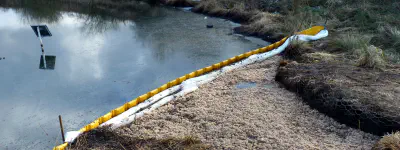An evidence-based approach to identifying resting sites of Eurasian otter Lutra lutra from camera-trap and field-sign data

Abstract
Mammals’ resting sites (dens) are important features of their ecology. Eurasian otter Lutra lutra resting sites are strictly protected by UK and European legislation and are ostensibly identified from associated field-signs. This legislation is difficult to apply given the poor understanding of resting sites coupled with the lack of evidence supporting a field-sign signature. We aimed to use camera-trap data to identify resting sites, investigate whether field-signs differed between resting and non-resting sites and describe behaviours recorded on camera-traps that are associated with resting. An evidence-based approach to identifying resting sites of Eurasian otter Lutra lutra from camera-trap and field-sign data camera-trap data showed that otters frequently visited potential resting sites, characterised by a very short time within the structure (often < 4 min). Resting sites were characterised by longer durations (often hours) during the daytime and night-time. Based on these data, six of our 26 sites were identified as resting sites. Modelling suggested that no single field-sign had a clear association with resting sites. However, we found a hitherto unrecognised distinction between otter latrines (defecation sites) and spraint (scent-marking) sites, and that camera-trap observations of latrine behaviour and bedding collection were exclusive to resting sites. As bedding and latrines are not always visible, presence of either indicates a resting site but no interpretation can be drawn from their absence, so camera-trapping would be recommended to identify resting site status. Data simulations found that camera-trapping for 38 d in winter, followed by 38 d in spring, was the optimal approach for a 95% chance of detecting a rest across all resting sites. Ours is the first study to identify standards and expectations for surveys using camera-trap and field-signs at Eurasian otter resting sites. Our novel account of their resting activity facilitates better interpretation of legislation.